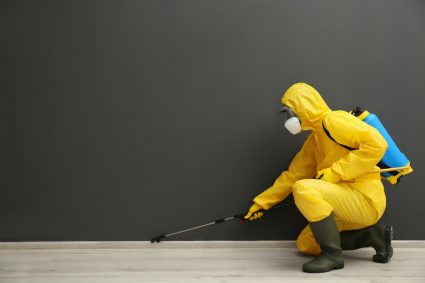
Basil, a beloved herb commonly used in cooking, has a hidden talent: it can double as a natural insect repellent. In this comprehensive guide, we will explore the science behind basil’s insect-repelling properties, how to make your own basil insect repellent at home, and how this homemade remedy compares to commercial insect repellents.
To make a basil insect repellent, gather a cup of fresh basil leaves, pour 1/2 cup of boiling water over them and let them soak for several hours. Remove the leaves, squeezing out the liquid into a spray bottle. Optionally, add 10 drops of basil essential oil to enhance the repellent effect. Spray the mixture onto your skin or clothes to repel insects, avoiding the eyes, mouth, and nasal cavity.
The Science Behind Basil’s Insect-Repelling Properties
Basil, an annual plant of the Ocimum genus, has been found to have repellency effectiveness against different mosquito species, including those that transmit malaria. The active ingredients in basil that make it effective as an insect repellent are primarily found in its essential oil. These compounds include linalool, eugenol, thymol, cineol, methyl eugenol, methyl chavicol, citronella, estragole, limonene, and nerolidol. These compounds are responsible for basil’s insect-repelling properties, making it effective against mosquitoes and other pests.
How to Make Basil Insect Repellent at Home
You can make a simple and effective basil insect repellent at home using fresh basil leaves or basil essential oil. Here’s a step-by-step guide:
- Gather a heaped cup of fresh basil leaves.
- Pour 1/2 cup of boiling water over the basil leaves and let them soak for several hours.
- Remove the leaves and squeeze every last drop of liquid into a spray bottle.
- Optionally, add 10 drops of basil essential oil to enhance the repellent effect.
- Spray the basil-infused water directly onto your skin or clothes to repel insects, avoiding the eyes, mouth, and nasal cavity.
Basil Insect Repellent vs Commercial Insect Repellents
While basil insect repellent has shown some effectiveness in repelling insects, it may not be as effective or long-lasting as commercial chemical insect repellents. DEET, for example, is considered the gold standard of repellents and has been proven to be more effective than other alternatives. Other active ingredients, such as IR3535 and picaridin, also offer a high level of protection from biting insects and ticks, with good safety profiles.
However, basil insect repellent offers a natural and eco-friendly alternative to chemical repellents. It’s a great option for those who prefer to avoid synthetic chemicals or who are allergic to commercial insect repellents.
Using Basil to Repel Insects
Aside from making a repellent spray, you can use basil to repel insects by planting it near outdoor sitting areas or by crushing fresh basil leaves and rubbing them onto your skin. The scent of basil is known to repel mosquitoes, flies, and moths.
Remember to keep basil plants healthy and thriving, as they require a lot of nutrients to effectively repel insects. Also, be aware that while basil insect repellent can provide casual protection from bug bites, it may not be as effective as commercial repellents containing DEET or other chemicals.
Conclusion
Basil insect repellent is a natural, eco-friendly alternative to chemical insect repellents. While it may not be as effective or long-lasting as commercial products, it can still provide casual protection from bug bites. Whether you choose to make a basil-infused spray or plant basil around your outdoor sitting areas, this versatile herb can help keep those pesky bugs at bay.
Frequently Asked Questions
Can I use dried basil leaves instead of fresh ones for making the insect repellent?
Yes, you can use dried basil leaves to make the insect repellent. However, fresh basil leaves are generally more potent and may provide a stronger repellent effect.
How often should I apply the basil insect repellent?
The frequency of application may vary depending on several factors, including the number of insects in your area, the time of day, and your activity level. As a general rule, you may need to reapply the basil insect repellent every 2-3 hours for optimal protection.
Can I use other types of basil for making the insect repellent?
Yes, you can use different types of basil to make the insect repellent. Varieties such as sweet basil, holy basil, and lemon basil are known for their strong aromatic properties and can be effective in repelling insects.
Is basil insect repellent safe for children and pets?
Basil insect repellent is generally safe for children and pets. However, it’s always a good idea to perform a patch test before applying it extensively. Also, avoid spraying it near the eyes, mouth, and nasal cavity.
Can I combine basil with other herbs to make a more potent insect repellent?
Yes, you can combine basil with other insect-repelling herbs such as lemongrass, rosemary, or citronella to create a more potent insect repellent. Just remember to adjust the quantities accordingly to maintain a balanced and pleasant aroma.










